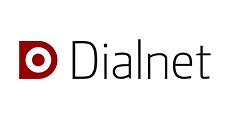
Published
Conecta2: An Android App for Communication between Disaster Survivors through an ad hoc Network
Conecta2: una aplicación en Android para la comunicación entre sobrevivientes de desastres a través de una red ad hoc
DOI:
https://doi.org/10.15446/ing.investig.110710Keywords:
ad hoc network, wi-fi direct, bluetooth, Android, post-disaster communication (en)red ad hoc, wi-fi direct, bluetooth, Android, comunicación post-desastre (es)
Downloads
Natural and man-made disasters often render network infrastructure inoperative, severely hampering communication between rescue workers and survivors. While smartphone-based ad hoc networks are frequently proposed as a solution, the implementation of mobile applications optimized for disaster scenarios remains a challenge. This study aims to address this gap by developing Conecta2, a prototype Android application for communication in post-disaster situations. The application establishes an ad hoc network using Wi-Fi Direct or Bluetooth in order to enable communication between nearby smartphones without relying on regular network infrastructure. Conecta2 allows users to transmit text, photos, and audio, as well as to estimate the location of nearby devices running the same software. Experimental tests were conducted to evaluate the performance of the application in simulated disaster scenarios. Results demonstrate that Conecta2 effectively facilitates communication between smartphones in situations analogous to disaster aftermath. The ability of the application to locate survivors via their smartphones also aids search and rescue efforts. In conclusion, Conecta2 offers a viable communication alternative for post-disaster scenarios, potentially improving the effectiveness of disaster response and survivor location efforts.
Los desastres naturales y provocados por el hombre a menudo dejan inoperante la infraestructura de red, lo que dificulta gravemente la comunicación entre los trabajadores de rescate y los sobrevivientes. Si bien las redes ad hoc basadas en teléfonos inteligentes se proponen con frecuencia como una solución, la implementación de aplicaciones móviles optimizadas para escenarios de desastre sigue siendo un desafío. Este estudio tiene como objetivo abordar esta brecha mediante el desarrollo de Conecta2, un prototipo de aplicación Android para la comunicación en situaciones posteriores a un desastre. La aplicación establece una red ad hoc utilizando Wi-Fi Direct o Bluetooth, en aras de permitir la comunicación entre teléfonos inteligentes cercanos sin depender de la infraestructura de red regular. Conecta2 permite a los usuarios transmitir texto, fotos y audio, así como estimar la ubicación de dispositivos cercanos que ejecutan el mismo software. Se realizaron pruebas experimentales para evaluar el rendimiento de la aplicación en escenarios de desastre simulados. Los resultados demuestran que Conecta2 facilita eficazmente la comunicación entre teléfonos inteligentes en situaciones análogas a las posteriores a un desastre. La capacidad de la aplicación para localizar sobrevivientes a través de sus teléfonos inteligentes también ayuda en los esfuerzos de búsqueda y rescate. En conclusión, Conecta2 ofrece una alternativa de comunicación viable para escenarios post-desastre, mejorando potencialmente la efectividad de la respuesta al desastre y los esfuerzos de localización de sobrevivientes.
References
1. M. Naddaf, “Turkey-Syria earthquake: What scientists know,” 2023. [Online]. Available: https://www.nature.com/articles/d41586-023-00364-y#:text=Turkey%20is%20in%20an%20active%20earthquake%20zone&text=The%20tectonic%20plate%20that%20carries,University%20in%20Milton%20Keynes%2C%20UK
2. F. Graham, “Daily briefing: The science underlying the Turkey-Syria earthquake,” 2023. [Online]. Available: https://www.nature.com/articles/d41586-023-00373-x DOI: https://doi.org/10.1038/d41586-023-00373-x
3. B.-G. Son, S. Chae, and C. Kocabasoglu-Hillmer, “Catastrophic supply chain disruptions and supply network changes: A study of the 2011 Japanese earthquake,” Int. J. of Oper. Prod. Management, vol. 41, pp. 781–804, 2021. [Online]. Available: https://www.emerald.com/insight/content/doi/10.1108/ijopm-09-2020-0614/full/html
4. E. Maly and A. Suppasri, “The Sendai framework for disaster risk reduction at five: Lessons from the 2011 great East Japan earthquake and tsunami,” Int. J. Disaster Risk Sci., vol. 11, pp. 167–178, 2020. https://doi.org/10.1007/s13753-020-00268-9
5. J. Xu and Y. Qiang, “Spatial assessment of community resilience from 2012 hurricane Sandy using nighttime light,” Rem. Sens>, vol. 13, p. 4128, 2021. https://dx.doi.org/10.3390/rs13204128
6. M. K. C. Arnaouti, G. Cahill, M. D. Baird, L. Mangurat, R. Harris, L. P. P. Edme, M. N. Joseph, T. Worlton, S. A. Jr et al., “Medical disaster response: A critical analysis of the 2010 Haiti earthquake,” Front. Pub. Health, vol. 10, p. 995595, 2022. https://doi.org/10.3389/fpubh.2022.995595
7. B. Tang, Q. Chen, X. Liu, Z. Liu, Y. Liu, J. Dong, and L. Zhang, “Rapid estimation of earthquake fatalities in China using an empirical regression method,” Int. J. Disaster Risk Red., vol. 41, p. 101306, 2019. https://doi.org/10.1016/j.ijdrr.2019.101306
8. X. Su, K. Ming, X. Zhang, J. Liu, and D. Lei, “Development of a targeted recommendation model for earthquake risk prevention in the whole disaster chain,” J. Inf. Process. Syst., vol. 17, pp. 14–27, 2021. https://doi.org/10.3745/JIPS.04.0201
9. J. Hochst, L. Baumgartner, F. Kuntke, A. Penning, A. Sterz, and B. Freisleben, “Lora-based deviceto- device smartphone communication for crisis scenarios,” in Proc. 17th Int. Conf. Inf. Syst. Crisis Res.Manag., 2020. [Online]. Available: https://peasec.de/paper/2020/2020_H%C3%B6chstetal_LoRaDeviceSmartphoneCommunicationCrisisScenarios.pdf
10. M. Ahmed and H. M. Ali, “Building a dynamic multi-hop wi-fi direct network for android smartphones,” Solid State Tech., vol. 63, pp. 2193–2205, 2020.
11. M. Fujimoto, S. Matsumoto, E. M. Trono, Y. Arakawa, and K. Yasumoto, “Effective application distribution system for Internet-less communication during disasters,” Sens. Mater., vol. 32, pp. 79–95, 2020. https://doi.org/10.18494/SAM.2020.2614
12. StatCounter, “Mobile operating system market share worldwide,” 2021. [Online]. Available: https://gs.statcounter.com/os-market-share/mobile/worldwide
13. Z. A. Younis, A. M. Abdulazeez, S. R. M. Zeebaree, R. R. Zebari, and D. Q. Zeebaree, “Mobile ad hoc network in disaster area network scenario: A review on routing protocols,” Int. J. Online Biomed. Eng., vol. 17, pp. 49–75, 2021. https://doi.org/10.3991/ijoe.v17i03.16039
14. Y. Jahir, M. Atiquzzaman, H. Refai, A. Paranjothi, and P. G. LoPresti, “Routing protocols and architecture for disaster area network: A survey,” Ad Hoc Net., vol. 82, pp. 1–14, 2019. https://doi.org/10.1016/j.adhoc.2018.08.005
15. G. C. Deepak, A. Ladas, Y. A. Sambo, H. Pervaiz, C. Politis, and M. A. Imran, “An overview of post-disaster emergency communication systems in the future networks,” IEEE Wireless Comm., vol. 26, pp. 132–139, 2019. https://doi.org/10.1109/MWC.2019.1800467
16. R. A. Nazib and S. Moh, “Routing protocols for unmanned aerial vehicle-aided vehicular ad hoc networks: A survey,” IEEE Access, vol. 8, pp. 77 535–77 560, 2020. https://doi.org/10.1109/ACCESS.2020.2989790
17. R. Alnashwan and H. Mokhtar, “Disaster management system over wifi direct,” 2019, pp. 1–6. https://doi.org/10.1109/CAIS.2019.8769460
18. T. Furutani, Y. Kawamoto, H. Nishiyama, and N. Kato, “A novel information diffusing method with virtual cells based Wi-Fi direct in disaster area networks,” 2018, pp. 1–6. https://doi.org/10.1109/WCNC.2018.8377148
19. F. Mezghani and N. Mitton, “Opportunistic multitechnology cooperative scheme and uav relaying for network disaster recovery,” Information, vol. 11, p. 37, 2020. https://doi.org/10.3390/info11010037
20. Reichman and S. Wayer, “Ad-hoc network recovery after severe disaster,” 2019, pp. 1–3. https://doi.org/10.1109/COMCAS44984.2019.8958195
21. S. D. Gupta, S. Choudhury, and R. Chaki, “Disaster management system using vehicular ad hoc networks,” in Advanced Computing and Systems for Security, R. Chaki, A. Cortesi, K. Saeed, and N. Chaki, Eds. Berlin, Germany: Springer, 2019, pp. 93–107. https://doi.org/10.1007/978-981-13-3702-4_6
22. F. Álvarez, L. Almon, H. Radtki, and M. Hollick, “Bluemergency: Mediating post-disaster communication systems using the Internet of Things and Bluetooth mesh, 2019. DOI: https://doi.org/10.1109/GHTC46095.2019.9033063
23. M. Lescisin and Q. H. Mahmoud, “Ad hoc messaging infrastructure for peer-to-peer communication,” Peer-to- Peer Net. Appl., vol. 12, pp. 60–73, 2019. https://doi.org/10.1007/s12083-017-0628-7
24. Y. Jung, “Community-based localized disaster response through temporary social overlay networks,” Mobile Net. Appl., vol. 24, pp. 1641–1653, 2019. https://doi.org/10.1007/s11036-017-0892-z
25. Ito and H. Hatano, “A study on a protocol for ad hoc network based on Bluetooth low energy,” in Cognitive Infocommunications, Theory and Applications, R. Klempous, J. Nikodem, and P. Baranyi, Eds. Berlin, Germany: Springer, 2019, pp. 433–458. https://doi.org/10.1007/978-3-319-95996-2_20
How to Cite
APA
ACM
ACS
ABNT
Chicago
Harvard
IEEE
MLA
Turabian
Vancouver
Download Citation
License
Copyright (c) 2024 María del Pilar Salamanca, Elio H. Cables, Juan Camilo Ramírez

This work is licensed under a Creative Commons Attribution 4.0 International License.
The authors or holders of the copyright for each article hereby confer exclusive, limited and free authorization on the Universidad Nacional de Colombia's journal Ingeniería e Investigación concerning the aforementioned article which, once it has been evaluated and approved, will be submitted for publication, in line with the following items:
1. The version which has been corrected according to the evaluators' suggestions will be remitted and it will be made clear whether the aforementioned article is an unedited document regarding which the rights to be authorized are held and total responsibility will be assumed by the authors for the content of the work being submitted to Ingeniería e Investigación, the Universidad Nacional de Colombia and third-parties;
2. The authorization conferred on the journal will come into force from the date on which it is included in the respective volume and issue of Ingeniería e Investigación in the Open Journal Systems and on the journal's main page (https://revistas.unal.edu.co/index.php/ingeinv), as well as in different databases and indices in which the publication is indexed;
3. The authors authorize the Universidad Nacional de Colombia's journal Ingeniería e Investigación to publish the document in whatever required format (printed, digital, electronic or whatsoever known or yet to be discovered form) and authorize Ingeniería e Investigación to include the work in any indices and/or search engines deemed necessary for promoting its diffusion;
4. The authors accept that such authorization is given free of charge and they, therefore, waive any right to receive remuneration from the publication, distribution, public communication and any use whatsoever referred to in the terms of this authorization.


























